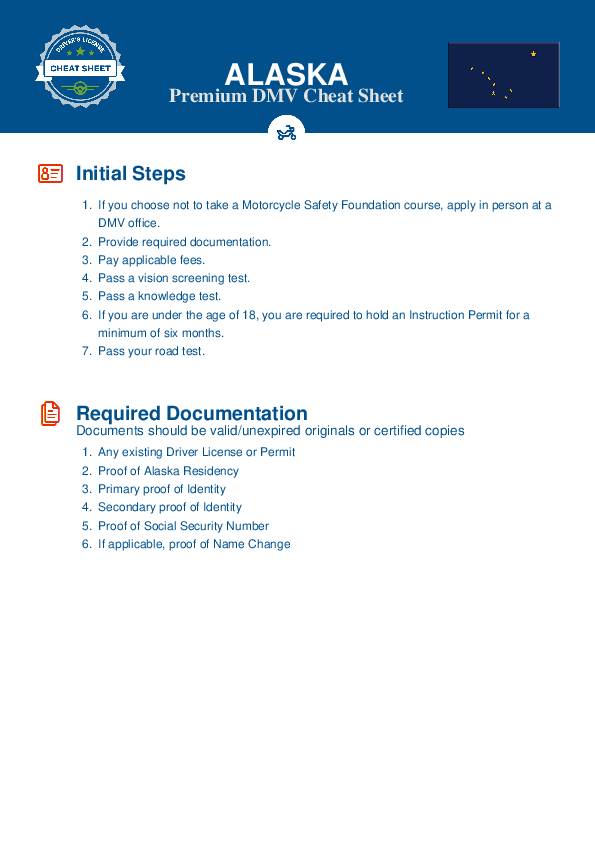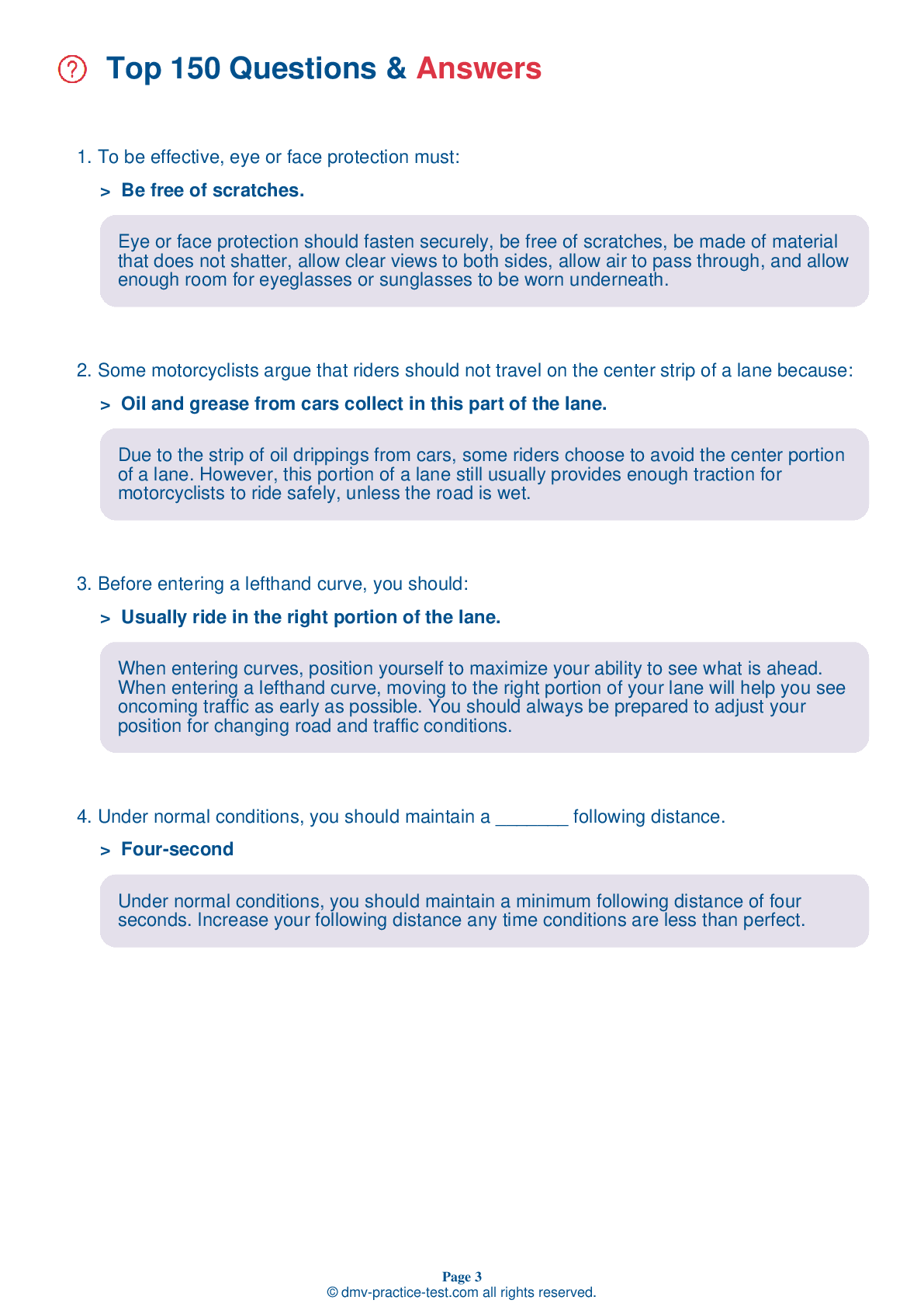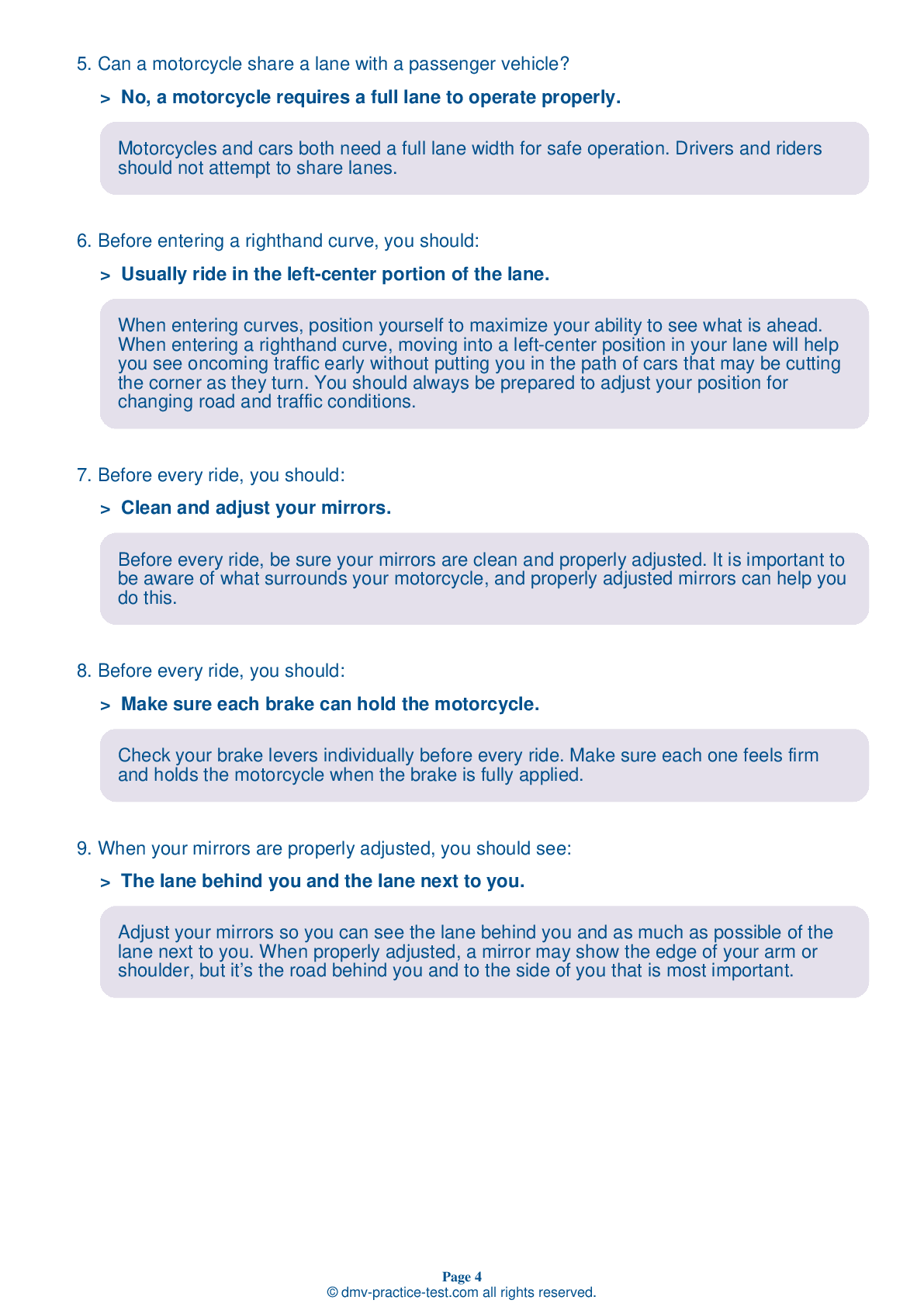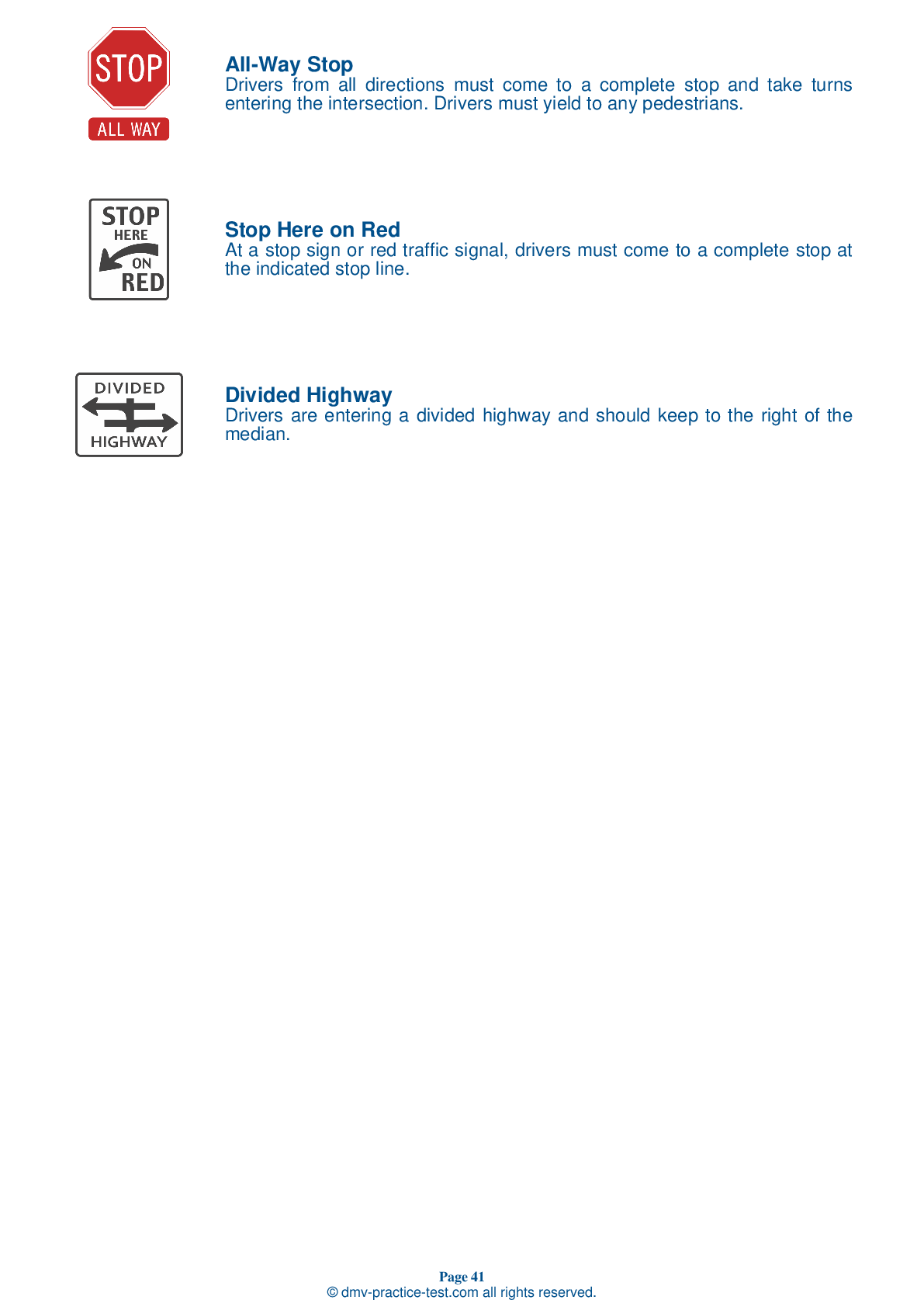Motorcycle Test | License AK 2025 | FREE Online Practice! #7 Page 2 of 4
Take this FREE motorcycle test (license in AK 2025) to check your knowledge of the road rules. To improve your results, download a motorcycle handbook online, study theory, and practice for free on our website. Still worried about how to get a motorcycle license in Alaska in 2025? Check our website for more sample tests, train as much as possible, and boost your grades!
7 . When operating a motorcycle on a slippery surface, you should:
When riding on slippery surfaces, you should reduce your speed. Make certain to use both brakes when braking and avoid making sudden moves.
8 . In general, when riding at night, your headlight should:
Using your high beam headlight will help you see and will help other drivers see you. Use your high beam headlight any time you are not riding behind or approaching other vehicles.
9 . If you are feeling tired while riding, you should:
You should avoid riding if you are tired. When making a long trip, take rest breaks at least every two hours to reduce the risk of becoming fatigued.
10 . Your knees should be:
Keep your knees against the gas tank to help with your balance as you turn the motorcycle.
11 . If your rear wheel locks while braking, you should:
If your rear wheel locks while braking, do not release the brake. Instead, keep it locked until you come to a full stop.
12 . It may be unsafe to ride alongside a vehicle in the lane next to you because:
If you ride directly alongside a vehicle that is in the lane next to you, the driver may not see you because you are in their blind spot. They may begin merging into your path without knowing you are there. Additionally, if you are directly next to another vehicle, the vehicle will block your path of escape if a hazard should appear in your lane.
See the exact questions that will be on the 2025 Alaska DMV exam.
99.2% of people who use the cheat sheet pass the FIRST TIME
Jeneen was tired of paying $5/gallon. She got herself a scooter that required the motorcycle license. She studyed the motorcycle test cheat sheet and passed her test the next day!
Christopher tells us how he knew nothing prior to obtaining the motorcycle study guide, and he only got one question wrong because he clicked on the wrong answer by mistake.



